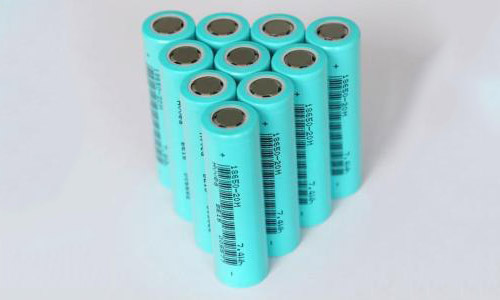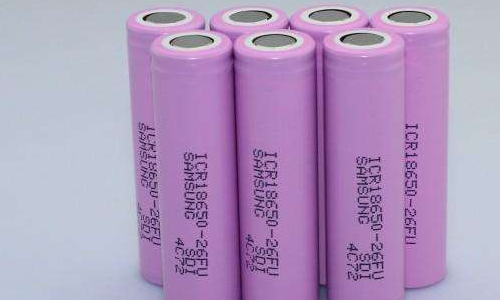Best Battery Technology Innovation, Trends and Materials
APR 14, 2020 Pageview:1312
What is the latest technology in batteries?
The way batteries are being made has not advanced in decades. But we are on the verge of a power revolution.
Big technology and car companies are only too conscious of the restrictions of lithium-ion batteries. While chips and operating systems are getting more efficient to save lots of power we're still only watching each day or two of use on a smartphone before having to recharge.
While it's going to be a while before we get a week's life out of our phones, development is progressing well. We have collected all the best battery discoveries that could be with us soon, from over the air charging to super-fast 30-second re-charging. Hopefully, you will be seeing this tech in your gadgets soon.
Monash University researchers have developed a lithium-sulfur battery that can power a smartphone for 5 days, outperforming lithium-ion. The researchers have fabricated this battery, have patents and therefore the interest of manufacturers.

IBM Research is reporting that it's discovered new battery chemistry that's free from heavy metals like nickel and cobalt and will potentially out-perform lithium-ion. IBM Research says that this chemistry has never been used in combination with a battery before and that the materials can be extracted from seawater.
The performance of the battery is promising, with IBM Research saying that it can out-perform lithium-ion during a number of various areas - it's cheaper to manufacture, it can charge faster than lithium-ion and may pack in both higher power and energy densities. All this is often available during a battery with low flammability of the electrolytes.
IBM Research points out that these advantages will make its new battery technology suitable for electric vehicles, and it's working with Mercedes-Benz amongst others to develop this technology into a viable commercial battery.
Panasonic, working with Professor Masahiro Fukui of Ritsumeikan University, has come up with a new battery management technology that will make it a lot easier to monitor batteries and determine the residual value of lithium-ion in them.
Panasonic states that this technique will help the drive towards sustainability by having the ability to raised manage reuse and recycling of lithium-ion batteries.
Sand Batteries are also new batteries that will be introduced to the market soon. This alternative sort of lithium-ion battery uses silicon to realize 3 times better performance than current graphite Li-ion batteries. The battery remains lithium-ion just like the one found in your smartphone, but it uses silicon rather than graphite within the anodes.
Scientists at the University of California Riverside are focused on Nano silicon for a short time, but it has been degrading too quickly and is hard to supply in large quantities. By using sand it is often purified, powdered then ground with salt and magnesium before being heated to get rid of oxygen leading to pure silicon. We originally picked up on this research in 2014 and now it's coming to fruition.
Silanano may be a battery tech startup that's bringing this system to plug and has seen big investment from companies like Daimler and BMW. The company says that its solution is often dropped into existing lithium-ion battery manufacturing, so it's set for scalable deployment, promising 20 percent battery performance boost now, or 40 percent in the near future.
Which battery will be the trend in the future?
Lithium-ion Technology
Lithium-ion batteries are seeing rapidly declining prices for quite 20 years, dropping in price for consumer electronic uses by 90 percent between 1990 and 2005, and continuing to drop since then. This discount is including an 11x increase in battery storage capacity per $100 since 2000.
Scaled Production
The rollout of Tesla’s Giga factory makes $100 per kWh lithium-ion batteries in electric vehicles possible by 2020. This price point would allow you to fill up the equivalent of a tank of gas for $9.35.
Flow Batteries
Flow batteries are just beginning to come to the plug and are proven within the lab to work for five thousand charge cycles or more.
Compressed Air Storage
LightSail Energy company is creating physical components rated for 10,000+ charge cycles.
Time of Use Arbitrage
The U.S. is increasingly going to time-of-use charges for electricity. Right now meaning charging consumers a coffee rate within the middle of the night (when demand is low) and a high rate within the afternoon and early evening (when demand is at its peak).
What battery material is the most popular?
Lead Acid
These are the foremost common sort of batteries utilized in automobiles and to store solar power because they will provide high current and their cost is comparatively low. They store only about 25 watt-hours per kg. Each cell consists of lead electrodes in a sulfuric acid solution. One lead electrode is coated with lead oxide. Connecting 6 of those cells serial gives a 12 V battery.
Deep cycle batteries have thicker electrodes than the quality starter batteries. Gel batteries and sealed lead acid batteries are commonly wont to store solar electric energy for off-grid applications.
Lithium-ion
Lithium ion batteries are utilized in computers and consumer electronics. Work is underway to adapt these for other applications due to their greater power density. They store about 150 watt-hours per kg. The electrodes are made from lithium cobalt oxide (LiCoO2), graphite, and solid lithium electrolyte. The cell voltage of lithium ion batteries is high, it can reach up to approximately 4 V, for the transfer of Li+ from partially reduced graphite to partially oxidized lithium cobalt oxide.
The batteries can explode at high temperatures. Current research within the area concerns new electrode materials and electrolytes for better thermal stability in large battery applications.
Nickel Metal Hydride
The metal that is found inside of a nickel-metal hydride battery is an intermetallic, AB5, where A could also be a rare earth mixture of lanthanum, cerium, neodymium, praseodymium, and B is nickel, cobalt, manganese, and/or aluminum. They store about 100 watt-hours per kg and are far more thermally stable than the lithium ion batteries. Some have been developed for hybrid vehicles.
Leave Message
Hottest Categories
-
Hottest Industry News
-
Latest Industry News











